Review of dietology Kazan state medical university Author
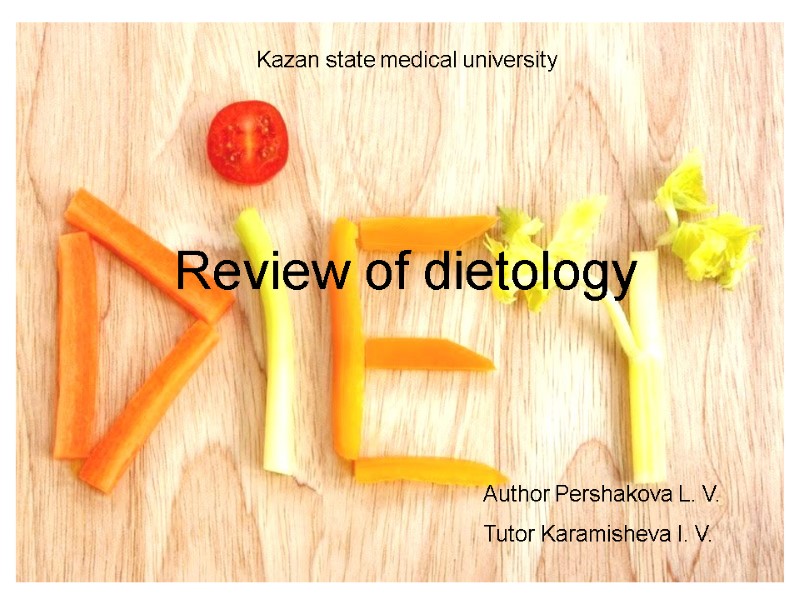

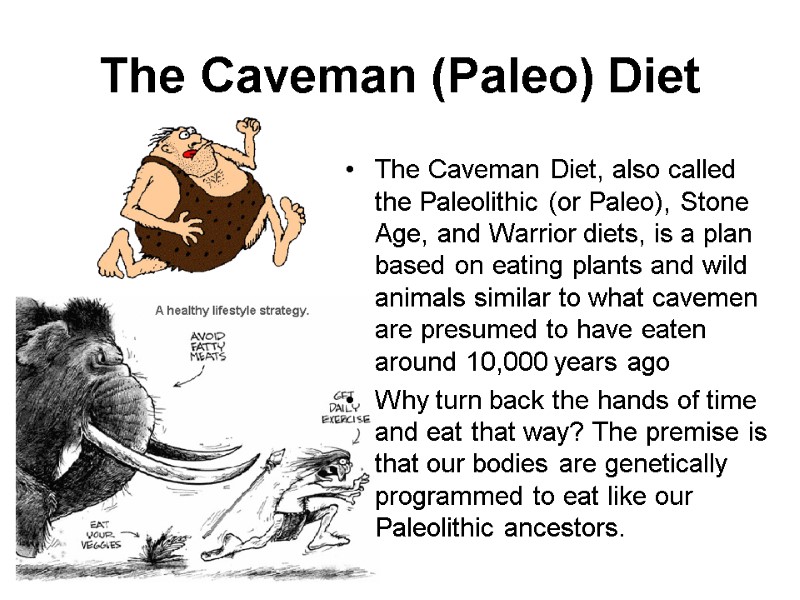
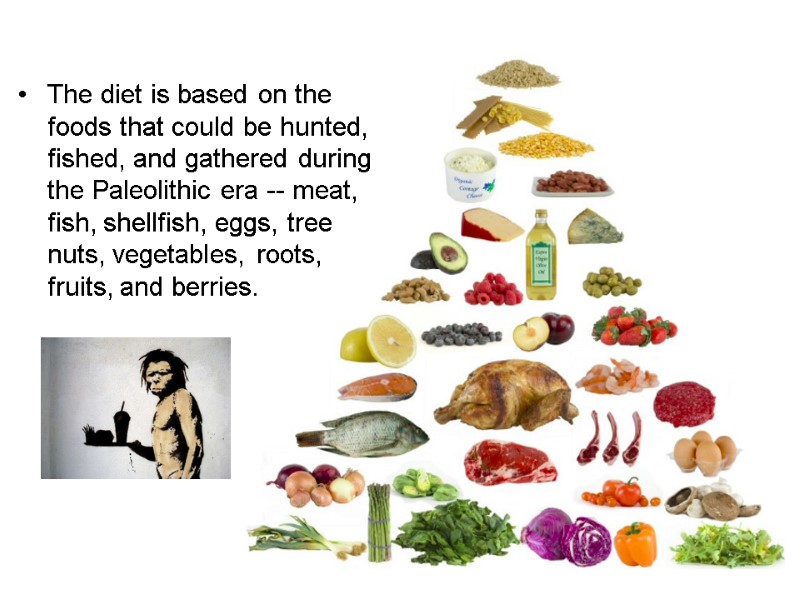
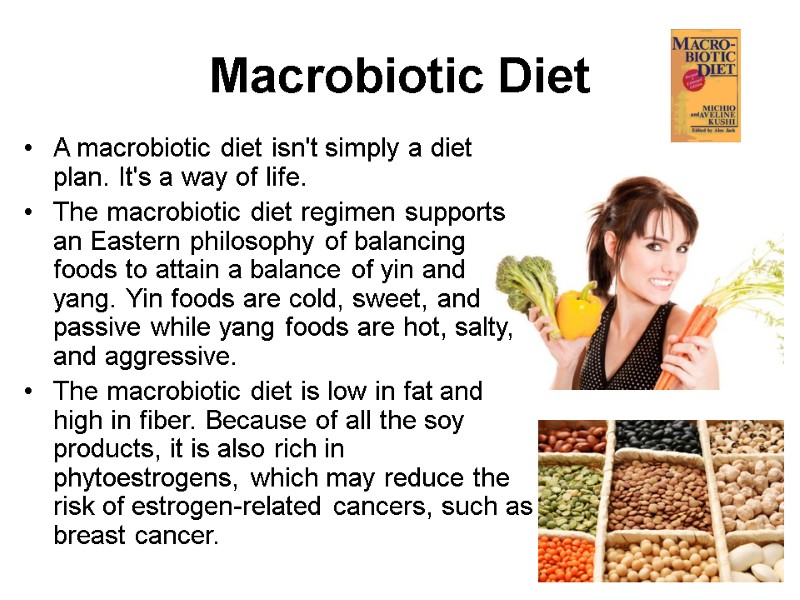
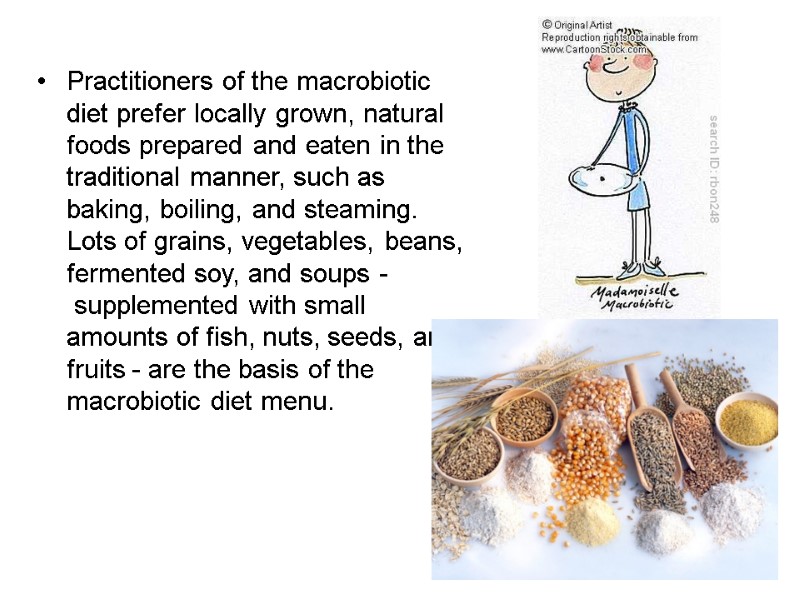
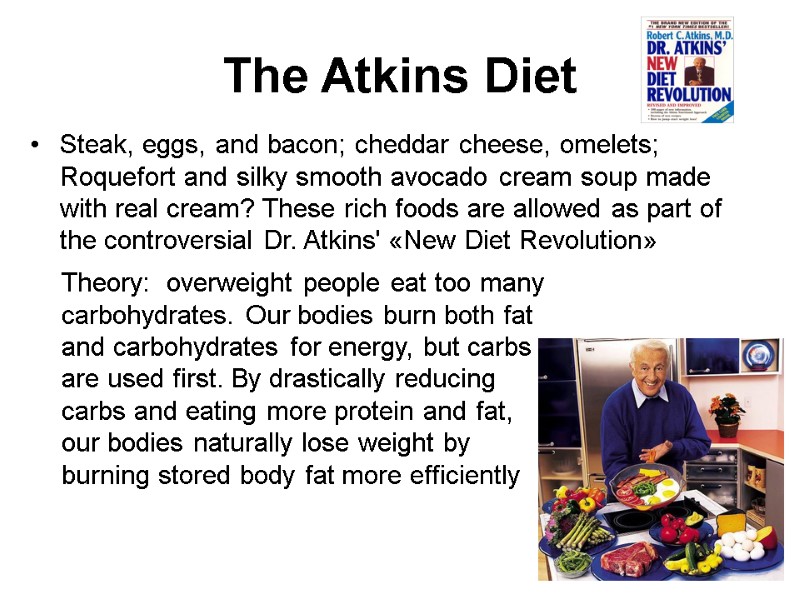
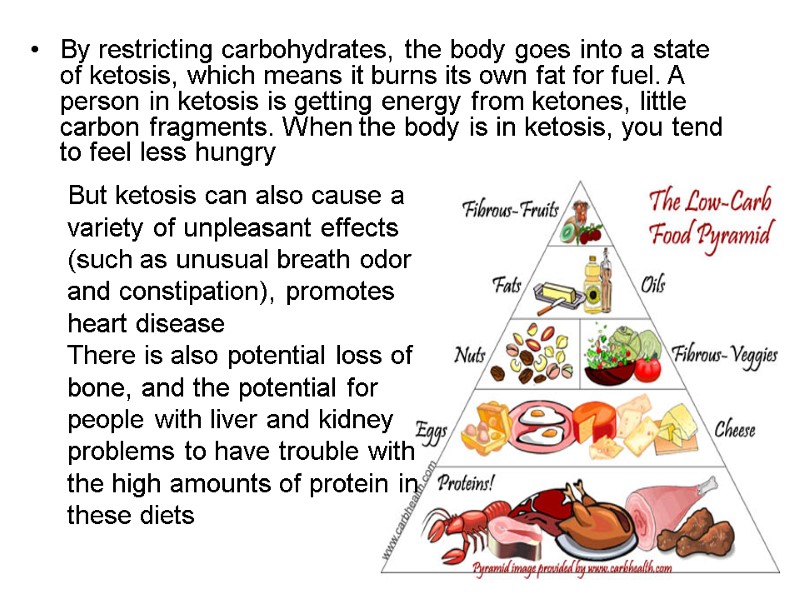
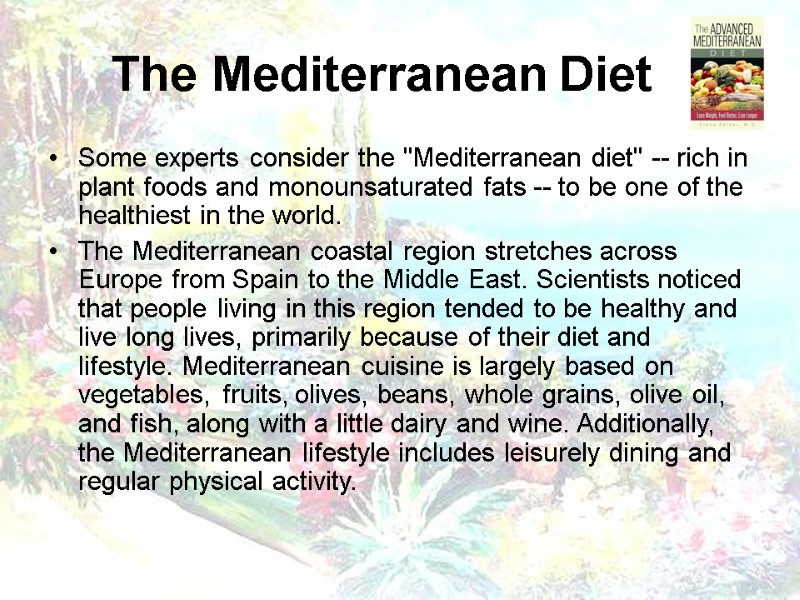
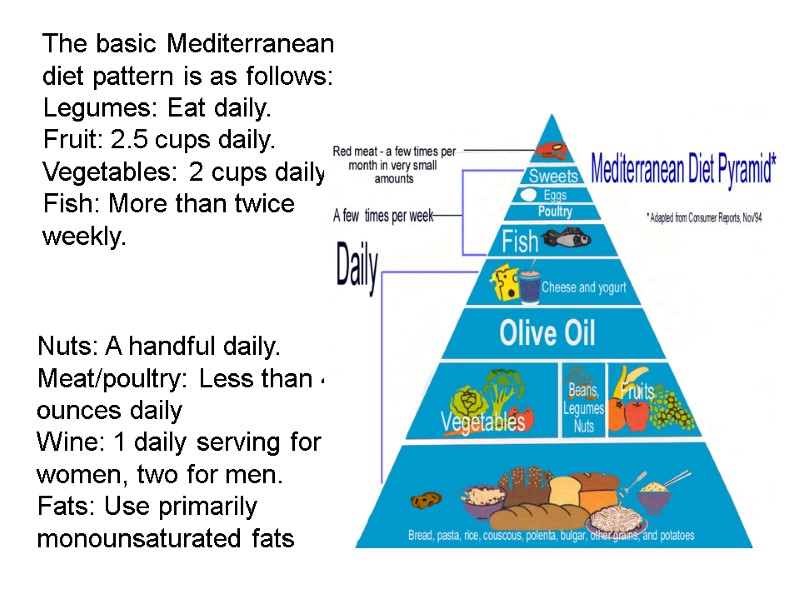

104-review_of_dietology.ppt
- Количество слайдов: 11
 Review of dietology Kazan state medical university Author Pershakova L. V. Tutor Karamisheva I. V.
Review of dietology Kazan state medical university Author Pershakova L. V. Tutor Karamisheva I. V.
 Introduction Dieting is the practice of eating food in a regulated fashion to achieve or maintain a controlled weight. In most cases dieting is used in combination with physical exercise to lose weight in those who are overweight or obese. Some athletes, however, follow a diet to gain weight
Introduction Dieting is the practice of eating food in a regulated fashion to achieve or maintain a controlled weight. In most cases dieting is used in combination with physical exercise to lose weight in those who are overweight or obese. Some athletes, however, follow a diet to gain weight
 The Caveman (Paleo) Diet The Caveman Diet, also called the Paleolithic (or Paleo), Stone Age, and Warrior diets, is a plan based on eating plants and wild animals similar to what cavemen are presumed to have eaten around 10,000 years ago Why turn back the hands of time and eat that way? The premise is that our bodies are genetically programmed to eat like our Paleolithic ancestors.
The Caveman (Paleo) Diet The Caveman Diet, also called the Paleolithic (or Paleo), Stone Age, and Warrior diets, is a plan based on eating plants and wild animals similar to what cavemen are presumed to have eaten around 10,000 years ago Why turn back the hands of time and eat that way? The premise is that our bodies are genetically programmed to eat like our Paleolithic ancestors.
 The diet is based on the foods that could be hunted, fished, and gathered during the Paleolithic era -- meat, fish, shellfish, eggs, tree nuts, vegetables, roots, fruits, and berries.
The diet is based on the foods that could be hunted, fished, and gathered during the Paleolithic era -- meat, fish, shellfish, eggs, tree nuts, vegetables, roots, fruits, and berries.
 Macrobiotic Diet A macrobiotic diet isn't simply a diet plan. It's a way of life. The macrobiotic diet regimen supports an Eastern philosophy of balancing foods to attain a balance of yin and yang. Yin foods are cold, sweet, and passive while yang foods are hot, salty, and aggressive. The macrobiotic diet is low in fat and high in fiber. Because of all the soy products, it is also rich in phytoestrogens, which may reduce the risk of estrogen-related cancers, such as breast cancer.
Macrobiotic Diet A macrobiotic diet isn't simply a diet plan. It's a way of life. The macrobiotic diet regimen supports an Eastern philosophy of balancing foods to attain a balance of yin and yang. Yin foods are cold, sweet, and passive while yang foods are hot, salty, and aggressive. The macrobiotic diet is low in fat and high in fiber. Because of all the soy products, it is also rich in phytoestrogens, which may reduce the risk of estrogen-related cancers, such as breast cancer.
 Practitioners of the macrobiotic diet prefer locally grown, natural foods prepared and eaten in the traditional manner, such as baking, boiling, and steaming. Lots of grains, vegetables, beans, fermented soy, and soups - supplemented with small amounts of fish, nuts, seeds, and fruits - are the basis of the macrobiotic diet menu.
Practitioners of the macrobiotic diet prefer locally grown, natural foods prepared and eaten in the traditional manner, such as baking, boiling, and steaming. Lots of grains, vegetables, beans, fermented soy, and soups - supplemented with small amounts of fish, nuts, seeds, and fruits - are the basis of the macrobiotic diet menu.
 The Atkins Diet Steak, eggs, and bacon; cheddar cheese, omelets; Roquefort and silky smooth avocado cream soup made with real cream? These rich foods are allowed as part of the controversial Dr. Atkins' «New Diet Revolution» Theory: overweight people eat too many carbohydrates. Our bodies burn both fat and carbohydrates for energy, but carbs are used first. By drastically reducing carbs and eating more protein and fat, our bodies naturally lose weight by burning stored body fat more efficiently
The Atkins Diet Steak, eggs, and bacon; cheddar cheese, omelets; Roquefort and silky smooth avocado cream soup made with real cream? These rich foods are allowed as part of the controversial Dr. Atkins' «New Diet Revolution» Theory: overweight people eat too many carbohydrates. Our bodies burn both fat and carbohydrates for energy, but carbs are used first. By drastically reducing carbs and eating more protein and fat, our bodies naturally lose weight by burning stored body fat more efficiently
 By restricting carbohydrates, the body goes into a state of ketosis, which means it burns its own fat for fuel. A person in ketosis is getting energy from ketones, little carbon fragments. When the body is in ketosis, you tend to feel less hungry But ketosis can also cause a variety of unpleasant effects (such as unusual breath odor and constipation), promotes heart disease There is also potential loss of bone, and the potential for people with liver and kidney problems to have trouble with the high amounts of protein in these diets
By restricting carbohydrates, the body goes into a state of ketosis, which means it burns its own fat for fuel. A person in ketosis is getting energy from ketones, little carbon fragments. When the body is in ketosis, you tend to feel less hungry But ketosis can also cause a variety of unpleasant effects (such as unusual breath odor and constipation), promotes heart disease There is also potential loss of bone, and the potential for people with liver and kidney problems to have trouble with the high amounts of protein in these diets
 The Mediterranean Diet Some experts consider the "Mediterranean diet" -- rich in plant foods and monounsaturated fats -- to be one of the healthiest in the world. The Mediterranean coastal region stretches across Europe from Spain to the Middle East. Scientists noticed that people living in this region tended to be healthy and live long lives, primarily because of their diet and lifestyle. Mediterranean cuisine is largely based on vegetables, fruits, olives, beans, whole grains, olive oil, and fish, along with a little dairy and wine. Additionally, the Mediterranean lifestyle includes leisurely dining and regular physical activity.
The Mediterranean Diet Some experts consider the "Mediterranean diet" -- rich in plant foods and monounsaturated fats -- to be one of the healthiest in the world. The Mediterranean coastal region stretches across Europe from Spain to the Middle East. Scientists noticed that people living in this region tended to be healthy and live long lives, primarily because of their diet and lifestyle. Mediterranean cuisine is largely based on vegetables, fruits, olives, beans, whole grains, olive oil, and fish, along with a little dairy and wine. Additionally, the Mediterranean lifestyle includes leisurely dining and regular physical activity.
 The basic Mediterranean diet pattern is as follows: Legumes: Eat daily. Fruit: 2.5 cups daily. Vegetables: 2 cups daily. Fish: More than twice weekly. Nuts: A handful daily. Meat/poultry: Less than 4 ounces daily Wine: 1 daily serving for women, two for men. Fats: Use primarily monounsaturated fats
The basic Mediterranean diet pattern is as follows: Legumes: Eat daily. Fruit: 2.5 cups daily. Vegetables: 2 cups daily. Fish: More than twice weekly. Nuts: A handful daily. Meat/poultry: Less than 4 ounces daily Wine: 1 daily serving for women, two for men. Fats: Use primarily monounsaturated fats
 Thank your for your attention
Thank your for your attention
